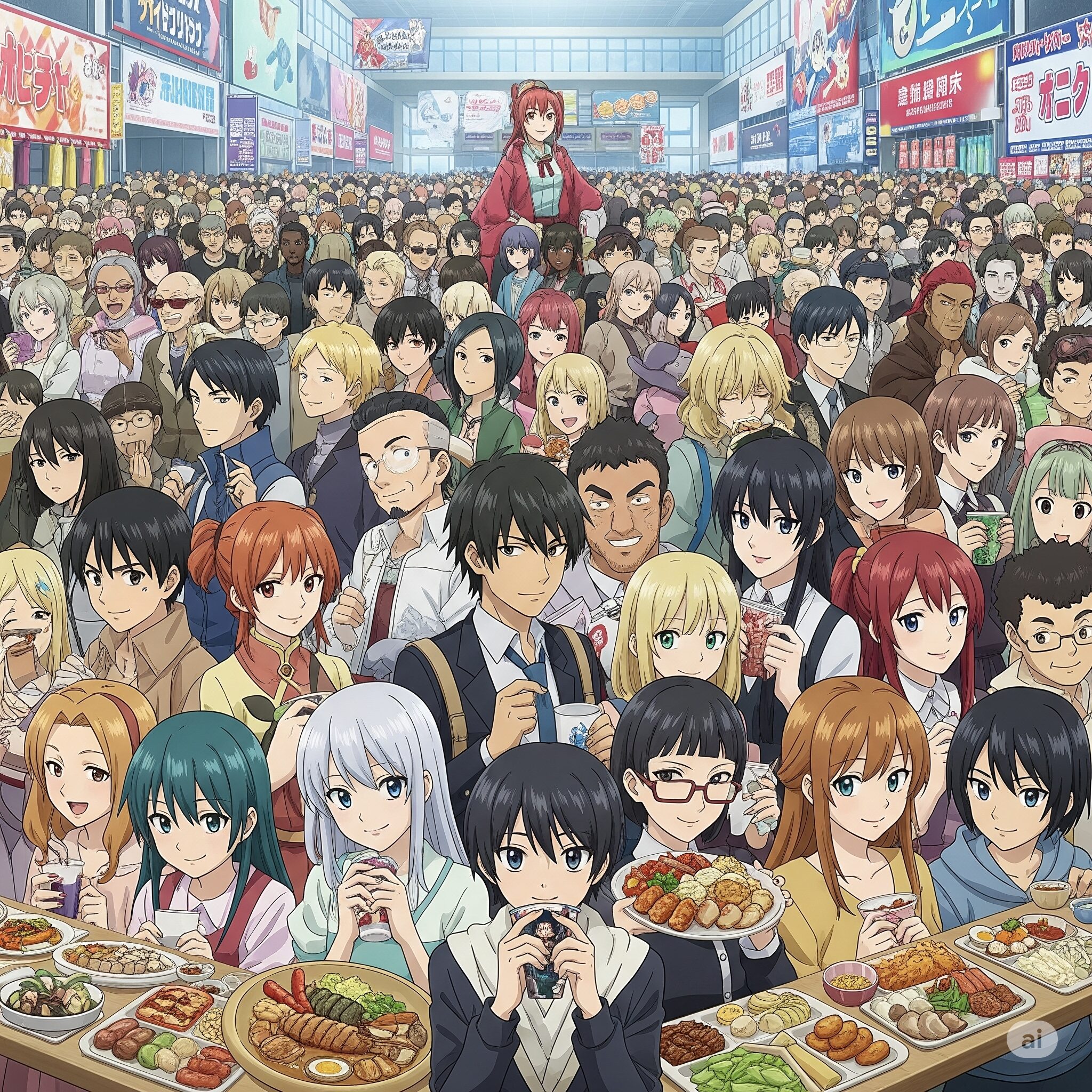✨ Introduction: Why Do Japanese Anime Stories Resonate So Deeply?
From Dragon Ball and Naruto to One Piece, Sailor Moon, and Doraemon, Japanese anime has captured the hearts of audiences around the world. These stories are more than just entertainment—they inspire, connect, and empower. But what exactly makes them so universally beloved?
Yes, the animation is beautiful. Yes, the action is thrilling. Yes, the characters are unforgettable. But beneath all that lies something deeper—something uniquely Japanese. It’s a cultural value so embedded in the national psyche that many Japanese people may not even realize it: the idea of “taitō” (対等)—a sense of mutual respect and dignity among individuals, regardless of their roles, strengths, or social status.
🧭 What Is “Taitō”? And Why Does It Matter?
In English, the word “equality” often implies sameness—treating everyone the same, regardless of differences. But taitō is different. It means recognizing and respecting differences while affirming that all people are equal in worth. It’s not about flattening individuality; it’s about honoring it.
In a school race, “byōdō” (平等) might mean giving everyone a gold medal. But “taitō” means acknowledging that one child is faster, another is smarter, and both deserve respect. It’s about standing side by side, not being the same.
🧑🤝🧑 Anime as a Reflection of Taitō
This philosophy is vividly reflected in Japanese anime. In One Piece, Luffy is the captain, but his crew members—Zoro, Nami, Sanji, and others—are not mere followers. Each has unique strengths, and all are treated as equals. In Dragon Ball, Goku may be the strongest, but he relies on his friends—Bulma’s intelligence, Krillin’s loyalty, Piccolo’s wisdom. In Naruto, the protagonist grows not in isolation, but through bonds with his peers and mentors.
Even in hierarchical relationships—like teacher and student, or leader and subordinate—anime often portrays a deep sense of mutual respect. The teacher is respected for their wisdom, but the student is never dehumanized. They are comrades, not tools.
🆚 The Villains: Hierarchy and Subjugation
In contrast, anime villains often operate within rigid hierarchies. There is always a supreme leader, and underlings who obey out of fear, not loyalty. Orders are followed blindly. Individuality is suppressed. Power is maintained through domination.
This creates a powerful moral contrast: the egalitarian hero group versus the authoritarian enemy. The heroes win not just because they’re stronger—but because they trust, respect, and empower one another.
📺 From Lone Heroes to Collaborative Teams
Earlier anime, like Astro Boy or Tetsujin 28-go, often featured solitary heroes. These characters fought alone, driven by duty or destiny. But from the 1970s onward, a shift occurred. Anime began to focus on teams—groups of diverse individuals working together. Think Gorenger, Sailor Moon, My Hero Academia, or Demon Slayer.
This shift reflects a broader cultural evolution. As Japan rebuilt itself after World War II and faced new social challenges, the value of cooperation, mutual respect, and shared responsibility became more prominent. Anime mirrored this change.
🌏 Why This Resonates Globally
In many parts of the world, societies are still structured around dominance and submission. Power is concentrated at the top. People are often valued based on wealth, status, or strength.
Japanese anime offers a different vision: a world where people of different abilities, backgrounds, and personalities come together as equals. Where strength is not just physical, but emotional, intellectual, and moral. Where even the weakest character can save the day.
This resonates deeply with younger generations around the world—those seeking belonging, dignity, and purpose in an increasingly fragmented world.
🧠 Anime as Cultural Transmission
The concept of taitō is not just a storytelling device—it’s a reflection of Japan’s historical values. In traditional Japanese governance, even powerful rulers were seen as caretakers of the people, not owners. The emperor was not a god-king, but a symbolic figure who unified the nation under shared values.
This contrasts with both Western feudalism and Confucian hierarchy, where power flowed top-down and individuals were often seen as subjects or property. In Japan, the idea of being “the emperor’s people” (kōmin) meant that no one could claim ownership over others. Everyone had dignity.
Anime, then, becomes a vessel for this philosophy. Through stories of friendship, teamwork, and mutual respect, it transmits a uniquely Japanese worldview to a global audience.
🌟 Conclusion: The Quiet Power of Taitō
Japanese anime doesn’t just entertain—it teaches. It offers a vision of society where people are valued not for their status, but for their humanity. In a world increasingly divided by inequality and conflict, the quiet message of taitō—that we are different, but equal—may be one of Japan’s most profound contributions to global culture.



コメント